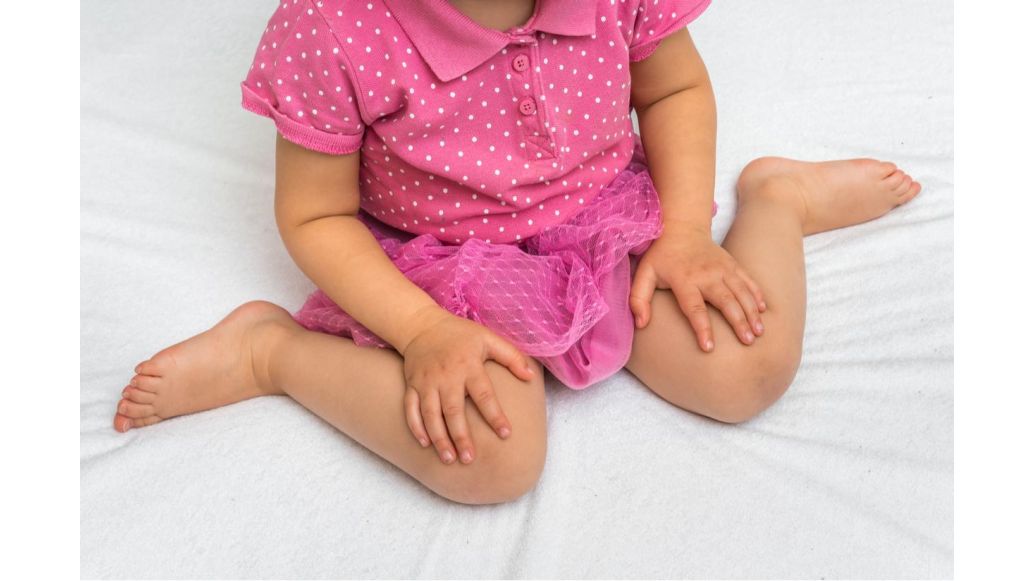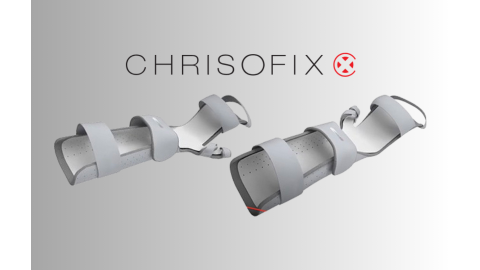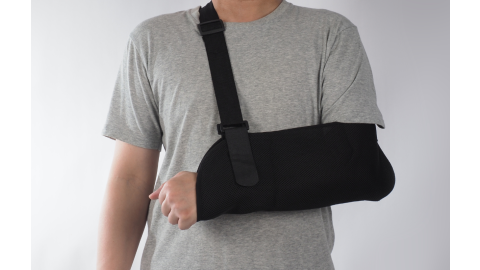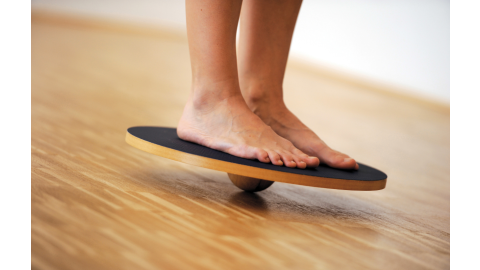So you’ve heard the term "w-sitting". If you’re now wondering whether you should be concerned about how your child sits, you’re not alone. Learn more about what therapists think about w-sitting and alternative sitting positions you can encourage your child to use instead.
Get the answers to all of your questions:
What is W-Sitting?
Why do children W-sit?
Should you worry if your child is w-sitting?
When should I consult a medical professional about my child’s W-sitting?
Should I correct my child if he or she is W-sitting?
What are alternatives to W-sitting? Try these 10 suggestions!
What is W-Sitting?
W-sitting is a term used by therapists to describe a sitting position where the child is sitting on their bottom with their legs out to the side (hips turned in and knees bent). If you looked at this position overhead, it would resemble a "W" (see the photo at the top of this article). It’s most common in children three to six years old.
Why do children W-sit?
W-sitting provides a wide, stable base of support. This means your child’s core doesn’t have to work as hard at supporting your child when sitting. W-sitting makes it easier for children with a weak core to sit and play with toys and reach and grab objects. It allows children to play and interact without focusing on core activation, balance, and posture. So for some children it becomes a default position while others only use it when focusing.
Should you worry if your child is w-sitting?
Occupational therapists, physical therapists, and doctors vary in their opinions on w-sitting. Some believe you should worry about your child sitting in this position while others believe it’s an acceptable alternative to other sitting positions. Learn what each side thinks.
Opinion One: Yes, W-sitting is something you should correct.
Some medical professionals say it’s important to encourage your child not to sit in a "W" position. An occupational therapist at Arnold Palmer Hospital for Children says that W-sitting is always a cause for concern to therapists.2 One problem is that w-sitting limits your child’s ability to rotate their trunk and reach across their midline (an important skill when writing, hitting a ball, and performing other daily activities). It also limits your child’s ability to strengthen their core (crucial for proper posture and balance). W-sitting can also lead to tight hip muscles if your child sits in this position frequently.
Another physical therapist agrees, stating that w-sitting can contribute to a pigeon-toed gait, where the toes are pointed inward while walking.1 This can make walking painful, tiring, and slow.
A pediatrician at Masonic Children’s Hospital adds that this sitting position can cause problems when walking or running and knees that bump into each other.3 She recommends encouraging your child to sit in different positions and contacting your primary physician if this is the only position your child continually uses.
Opinion Two: No, W-sitting is just an alternative sitting position.
Other medical professionals don’t believe w-sitting is a cause for concern. The Today Show interviewed two pediatric orthopedic surgeons.5 They explained that many children are born with femoral anteversion (thigh bones turned in), a condition that they eventually outgrow. Until then, W-sitting is a more comfortable sitting position, though it is painful for many adults. The surgeons believe that W-sitting isn’t a cause for worry, children are simply responding to their natural anatomy and avoiding stress on their joints.
Seattle Children’s Hospital says that children who have femoral torsion (and are often pigeon-toed) W-sit because it is more comfortable.6 They state that w-sitting will not affect your child’s hips or legs or worsen the intoeing, and children should be allowed to sit this way if other sitting positions are painful. Most children outgrow this condition and don’t require surgery or other interventions.
So...Should I worry about W-sitting? What does the research say?
There is limited research on the impact of W-sitting, beyond W-sitting in specific conditions like cerebral palsy.8 While it probably isn’t the best sitting position for your child, unless it’s the only position your child sits in, w-sitting is okay, occasionally.
When should I consult a medical professional about my child’s W-sitting?
If you’re concerned, try to keep track of a few factors to share with your medical professional. How often is your child w-sitting? Do they use the position when playing with a specific toy or doing a certain activity? Will they shift to other positions when prompted? Do other sitting positions cause pain? Is your child having problems with other motor skills?
See a physical therapist (PT) if your child…
- Limps
- Walks with a pigeon-toed gait
- Has a weakness in their lower extremities
See an occupational therapist (OT) if your child…
- Slumps when sitting in a chair (low muscle tone/weak core strength)
- Struggles with fine motor tasks (holding objects, zippering, tying shoes)
- Seems clumsy and uncoordinated
- Cannot sit alone in any position besides a "W"
Talk to your pediatrician if…
- You have any concerns about your child’s frequent W-sitting and want to ensure it isn’t part of an underlying condition
- You have questions about w-sitting and whether you should correct it
- You aren’t sure which specialist your child should see for an evaluation
Should I correct my child if he or she is W-sitting?
Instead of correcting your child, offer alternatives. If your child w-sits when doing a specific activity, like playing with an iPad, move the device or toy to a table. Play games that involve jumping, balancing, and running to strengthen your child’s muscles and make other sitting positions easier. If you want to correct your child, try a phrase like "Let’s sit criss-cross to make you strong" instead of "Fix your legs".
What are alternatives to W-sitting? Try these 10 suggestions!
If you want to prevent or limit your child’s w-sitting, suggest alternative sitting positions. Encourage your child to try some of these options!
1. Tailor sit
Also known as "criss cross applesauce" or "pretzel pose", this position externally rotates the hips and knees (the opposite of w-sitting, which encourages internal rotation). Sitting cross legged keeps your child’s joints in proper alignment. Add a stability disc to strengthen your child’s core and improve balance while sitting.
2. Prone position
Tummy time isn’t just for babies! Stretching out on their stomach is a great position for your child when reading or playing. It increases shoulder stability and strength too.
3. Sitting on a foam roller

Looking for another alternative? A foam roller provides a dynamic seating experience. Your child can straddle the roller and balance by keeping their feet flat on the floor. Use with a cube chair "table" or another low table as a play surface.
4. Long sit
Also known as "Letter L" sitting, in a long sit your child sits on their bottom with their legs extended straight out. This position challenges your child’s trunk control and allows increased trunk rotation (like turning to grab a different toy). Plus, it encourages hamstring flexibility, muscles which occasionally become shortened in children who prefer w-sitting.
5. Side sit
This sitting position is also called the "Letter Z". In this position your child sits on their bottom with both knees bent and both legs to one side. It’s a great choice when working with transitions in and out of sitting. Stabilizing in this position means your child also works on upper extremity weight bearing (when your child leans on their hands). Vary which side your child sits on to develop equal core strength.
6. Sitting on a peanut ball
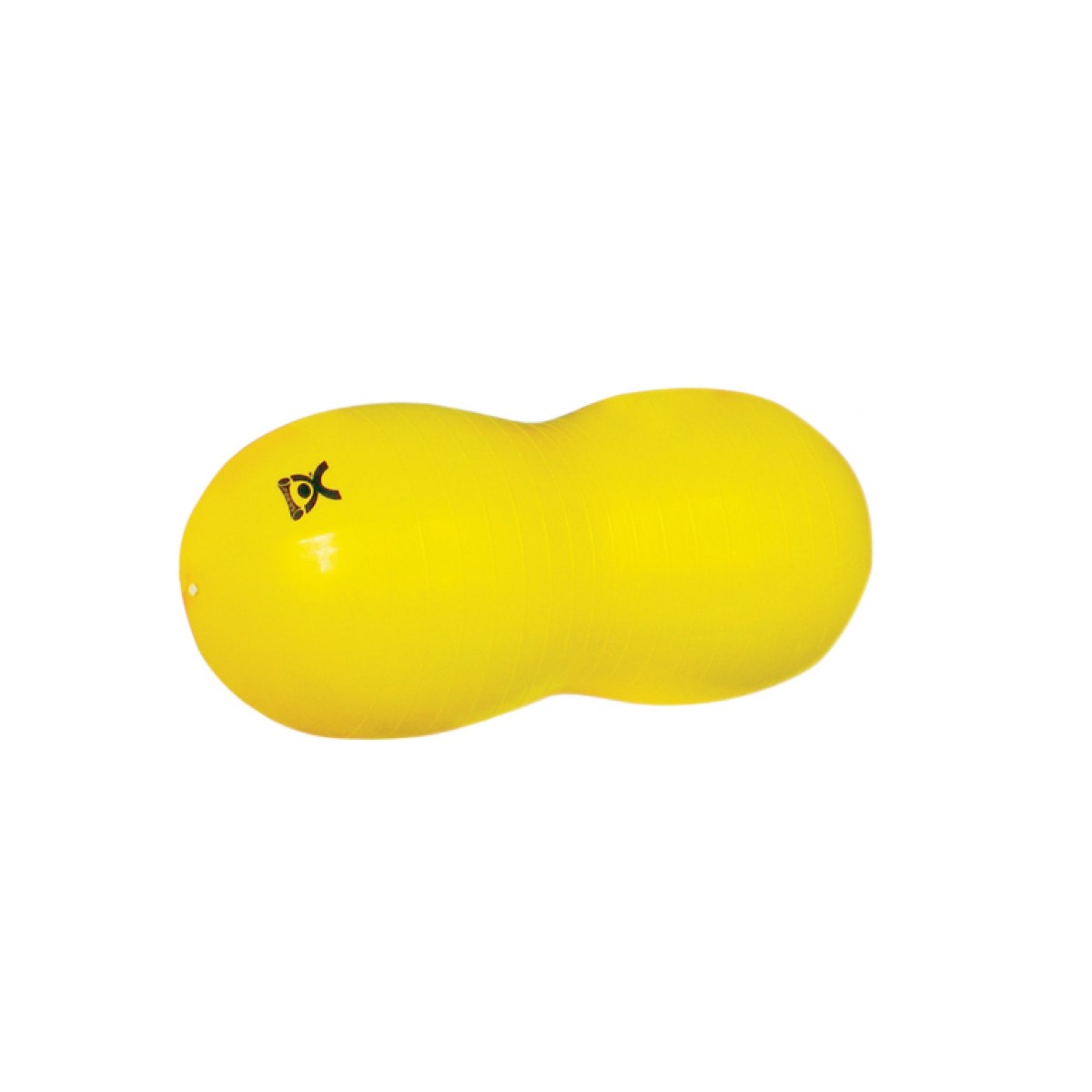
A saddle roll is a fun alternative to w-sitting! The unique shape limits motion, making the roll easier to balance on than an exercise ball. Stick with a size that lets your child put their feet flat on the floor with hips and knees at 90° for the best posture.
7. Sitting on an exercise ball
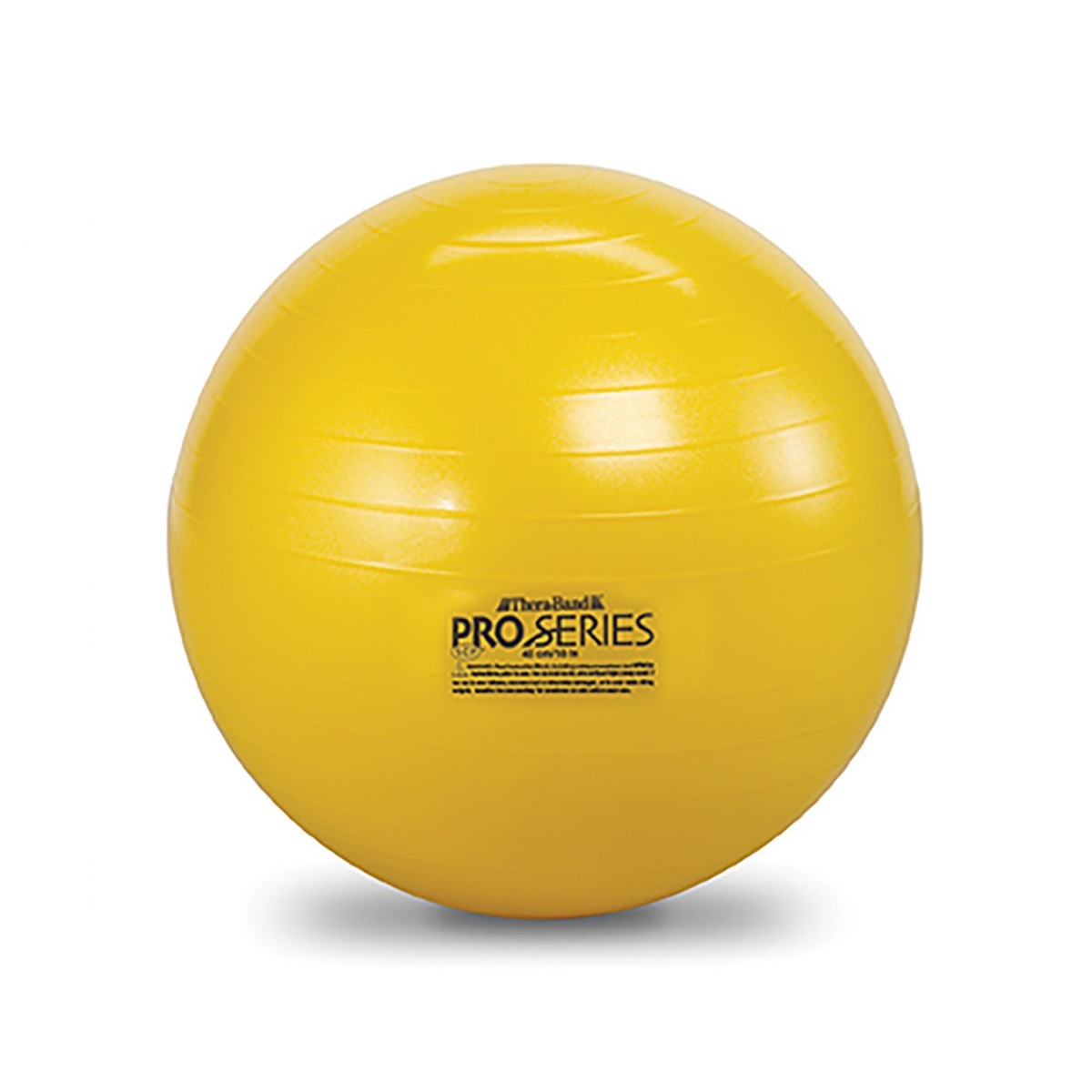
Is your child ready for a challenge? Try an exercise ball to work on seated balance. They’re great for kids who need extra sensory input or who focus better when moving. Plus you can use the ball to work on core exercises!
8. Heel sit
This is another option instead of w-sitting. In this kneeling position, your child can sit between their feet with their feet pointed straight back and shins close to their thighs. Heel sitting makes it easy for your child to switch to a quadruped or tall kneeling position when playing.
9. Tall kneel
In a tall kneeling position, your child kneels on bent knees, shins and feet on the floor, with their thighs and trunk perpendicular to the floor. This position strengthens the trunk, promotes proper joint alignment, and can be used when coloring/playing at a low table.
10. Sitting on a low child-sized chair
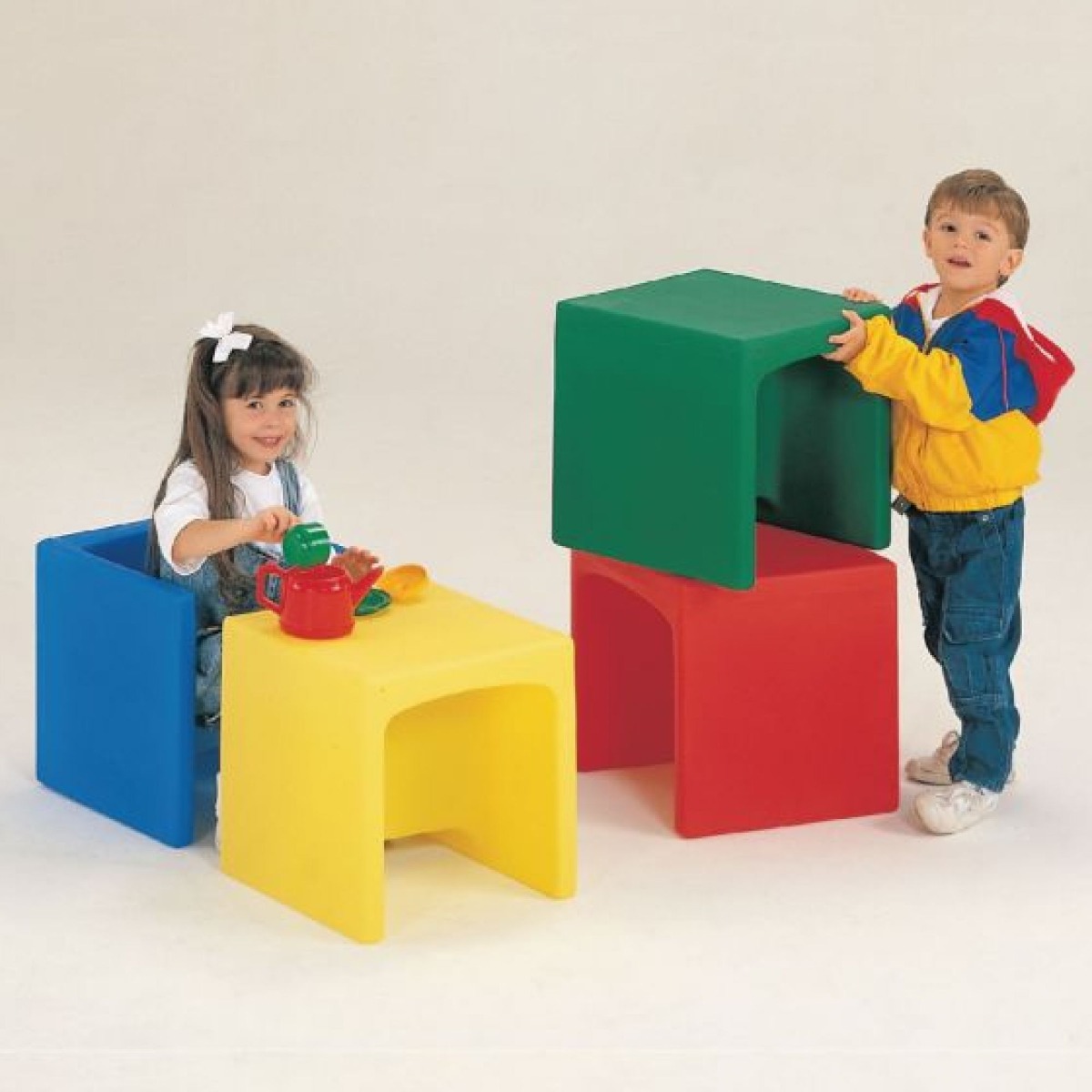
Sitting with knees and hips at 90° and with feet flat gives your child an efficient base. It’s perfect for extra support during play. Use a chair that is properly sized for your child. Try a chair cube for little ones. It offers two heights to grow with your child and can also be used as a table top during tall kneeling.
In Summary...
Medical professionals are divided but most agree that occasional w-sitting isn’t a major issue. Encourage your child to strengthen their core muscles and explore alternative sitting positions to avoid w-sitting. If you still have concerns about your child’s seating habits, contact a medical professional for an evaluation.
References
- Brown, J. (n.d.). Experts Reveal the Truth About When to Worry About W Sitting. Retrieved from https://bit.ly/2wjti2R
- Gonzales, J. (2015). Why W-sitting might be a cause for concern. Arnold Palmer Hospital for Children. Retrieved from https://bit.ly/2R1U8qh
- Gustafson, K. (2017). What is W-sitting? Retrieved from https://bit.ly/31pCNML
- Le Roux, T. (n.d.). Core Strength & Core Stability. Retrieved from https://bit.ly/2KO8o4X
- Pawlowski, A. (2016). Why 'W sitting' is really not so bad for kids, after all. Retrieved from https://on.today.com/2K9BXhM
- Seattle Children’s. (2017). Femoral Torsion. Retrieved from https://bit.ly/2K7ZfEL
- Kid Sense Child Development. (n.d.). Crossing the Body’s Midline. Retrieved from https://bit.ly/2npUQh8
- Yokochi, Kenji et al. (1989). Motoscopic analysis of gross motor patterns in athetotic cerebral palsied children. Brain and Development, Volume 11, Issue 5. Retrieved from https://bit.ly/2KcvD98
Medical Disclaimer: The information provided on this site, including text, graphics, images and other material, are for informational purposes only and are not intended to substitute for professional medical advice, diagnosis or treatment. Always seek the advice of your physician or other healthcare professional with any questions or concerns you may have regarding your condition.








 France
France Australia
Australia